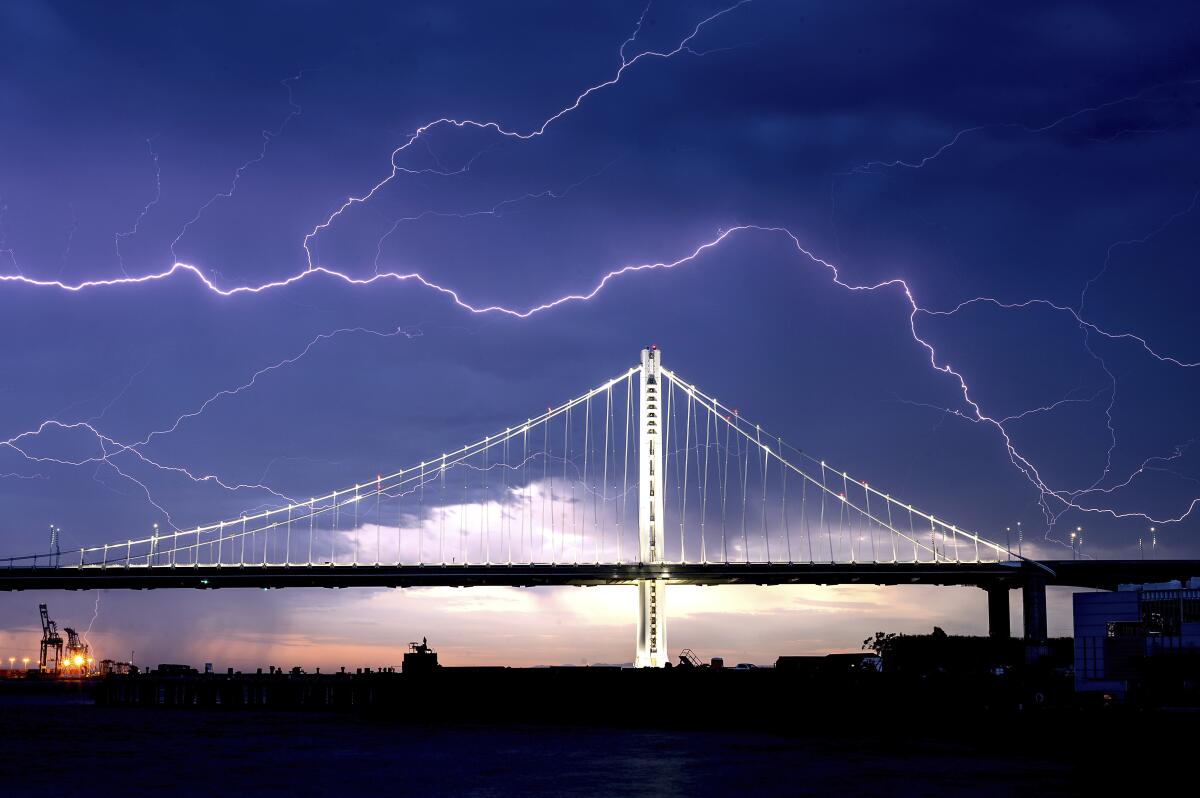Letters to the Editor: California is now the world’s warning on climate change

- Share via
To the editor: Thanks for covering the crucial topic of more frequent extreme weather events. This heat wave is a good reminder. The discomfort and health effects are concerning and will get more so in California and around the world. (“From ‘firenadoes’ to record heat, California extreme weather a glimpse of future,” Aug. 18)
People need to know that disruption from the coronavirus is only a minor problem compared to what will happen over the decades if we don’t do something. Problem is, once it gets really bad, then it will be too late.
When people talk about the costs of curbing climate change, they should know that a recent study has shown that the health effects of air pollution alone cost so much that it would make it worthwhile to phase out fossil fuels even without climate change.
So, science has given us an opportunity to use our intelligence and forethought to avoid disaster. The question is whether we will take that opportunity.
We need to tell our elected representatives to make climate change a top priority. And, we need to vote only for candidates who are committed to aggressive action and not those who support a belated, halfhearted approach. We are running out of time, and we all have to act like it.
Joyce Waterhouse, Pasadena
..
To the editor: Your front-page story vividly depicts the awful effects that climate change is already having on Californians. As the level of carbon dioxide in the atmosphere continues to climb, one can only imagine what future years will be like.
Yet the Trump administration continues, inexorably, to roll back restrictions on emissions of pollutants in the atmosphere. In so doing, the U.S. has squandered years of progress that could have been made in heading off the worst effects of climate change.
Since we can’t make up for this lost time, I believe this will prove to be the worst consequence of the Trump presidency.
Polls show that nearly two-thirds of Americans are concerned about climate change; about the same percentage is worried about the COVID-19 pandemic. Yet for much of the Democratic National Convention, the speakers barely mentioned global warming, but they forcefully criticized President Trump’s COVID-19 response.
Economists and scientists alike have been warning that time is running out before we reach a number of tipping points in the climate crisis. Last year, more than 3,500 economists signed an open letter in the Wall Street Journal calling for a tax on fossil fuels in order to cut carbon emissions. The annual reports from the Intergovernmental Panel on Climate Change are increasingly ominous in their warnings.
I hope that the Democrats spend more time talking about climate change.
Barry Engelman, Santa Monica
..
To the editor: Your article describes a perfect storm of three climate-related phenomena that have come together to produce the heat, humidity and fire susceptibility we now face. Of the three, only one, higher temperatures due to climate change, lies within our control.
If we allow global average temperatures to continue to rise, extreme events will become more frequent and will occur in unanticipated ways.
We have to continue to press for policies, including a price on carbon and other measures contained in the Democratic Party platform, that will lead to reductions in greenhouse gas emissions and, eventually, cessation of our addiction to fossil fuels.
Michael Werner, Pasadena
..
To the editor: California has established the admirable goal of being off fossil fuels by 2045. We are losing valuable time focusing on individual geographies and debates, be they over Joshua Trees or endangered species without looking at the bigger picture.
Notwithstanding how much electricity needs to be produced in the state versus in neighboring ones, California should focus on how many square miles of solar panels are needed to meet our goal. Then, it should identify which areas are best suited to reaching that goal so that we can move forward addressing climate change as quickly as possible.
One would think that this is achievable in a state that covers an area of 163,000-plus square miles with seemingly so much available land.
Joe Grauman, Los Angeles
More to Read
A cure for the common opinion
Get thought-provoking perspectives with our weekly newsletter.
You may occasionally receive promotional content from the Los Angeles Times.









